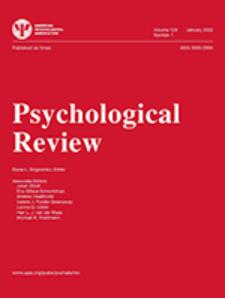将疾病内化为变形者:了解症状表现中的个体和文化异质性。
IF 5.8
1区 心理学
Q1 PSYCHOLOGY
引用次数: 0
摘要
当代精神病理学研究的基础假设是,诊断类别的特点是离散的个体症状集。因此,在过去的半个世纪里,已经投入了大量的资源来确定和改进这些集合。然而,有一种相反的传统,强调症状的异质性,特别是内化障碍。随着时间的推移,这种异质性可以在个体患者、不同患者以及不同社会文化背景下的患者群体中观察到。与其将这些类型的异质性理解为需要解决的问题,我们认为症状表现的可变性是内化痛苦的核心特征:这些疾病在本质上是变形者。我们从不同文化历史背景下内化痛苦的异同入手。然后,我们将症状作为生理、心理和文化现象的复杂性质进行处理,这些现象是经历、解释、记忆和预期的,强调了在每个分析层次上异质性的潜在机制。由于异质性不是无限的,我们也考虑提供更统一的临床表现和稳定的历史变化的约束。在心理功能的文化塑造方面的文献被招募,以说明概念化和研究症状异质性的方法。将这些疾病理解为变形者有可能改变我们对精神病理学的研究方法,将快速增长的关于个体和文化差异的文献带到我们如何概念化内化痛苦的核心。(PsycInfo Database Record (c) 2025 APA,版权所有)。本文章由计算机程序翻译,如有差异,请以英文原文为准。
Internalizing disorders as shape-shifters: Understanding individual and cultural heterogeneity in the presentation of symptoms.
Contemporary study of psychopathology is grounded in the assumption that diagnostic categories are characterized by discrete sets of individual symptoms. As such, considerable resources have been invested over the past half-century to identify and refine these sets. There is a countertradition, however, that emphasizes symptom heterogeneity, especially for the internalizing disorders. This heterogeneity is observed over time within individual sufferers, across different sufferers, and across groups of sufferers in different sociocultural contexts. Rather than understanding these types of heterogeneity as a problem in need of a solution, we argue that variability in symptom presentation is a core feature of internalizing distress: These disorders are, in their essence, shape-shifters. We begin with examples of similarities and differences in internalizing distress across cultural-historical contexts. Then, we address the complex nature of symptoms as physiological, psychological, and cultural phenomena that are experienced, interpreted, remembered, and anticipated, highlighting potential mechanisms of heterogeneity at each level of analysis. As heterogeneity is not boundless, we also consider constraints that afford more uniform clinical presentations and stabilize historical changes. The literature on the cultural shaping of psychological functioning is recruited throughout to illustrate the ways to conceptualize and study symptom heterogeneity. Understanding these disorders as shape-shifters has the potential to transform our approach to psychopathology, bringing a rapidly growing literature on individual and cultural variation to the very center of how we conceptualize internalizing distress. (PsycInfo Database Record (c) 2025 APA, all rights reserved).
求助全文
通过发布文献求助,成功后即可免费获取论文全文。
去求助
来源期刊

Psychological review
医学-心理学
CiteScore
9.70
自引率
5.60%
发文量
97
期刊介绍:
Psychological Review publishes articles that make important theoretical contributions to any area of scientific psychology, including systematic evaluation of alternative theories.
 求助内容:
求助内容: 应助结果提醒方式:
应助结果提醒方式:


